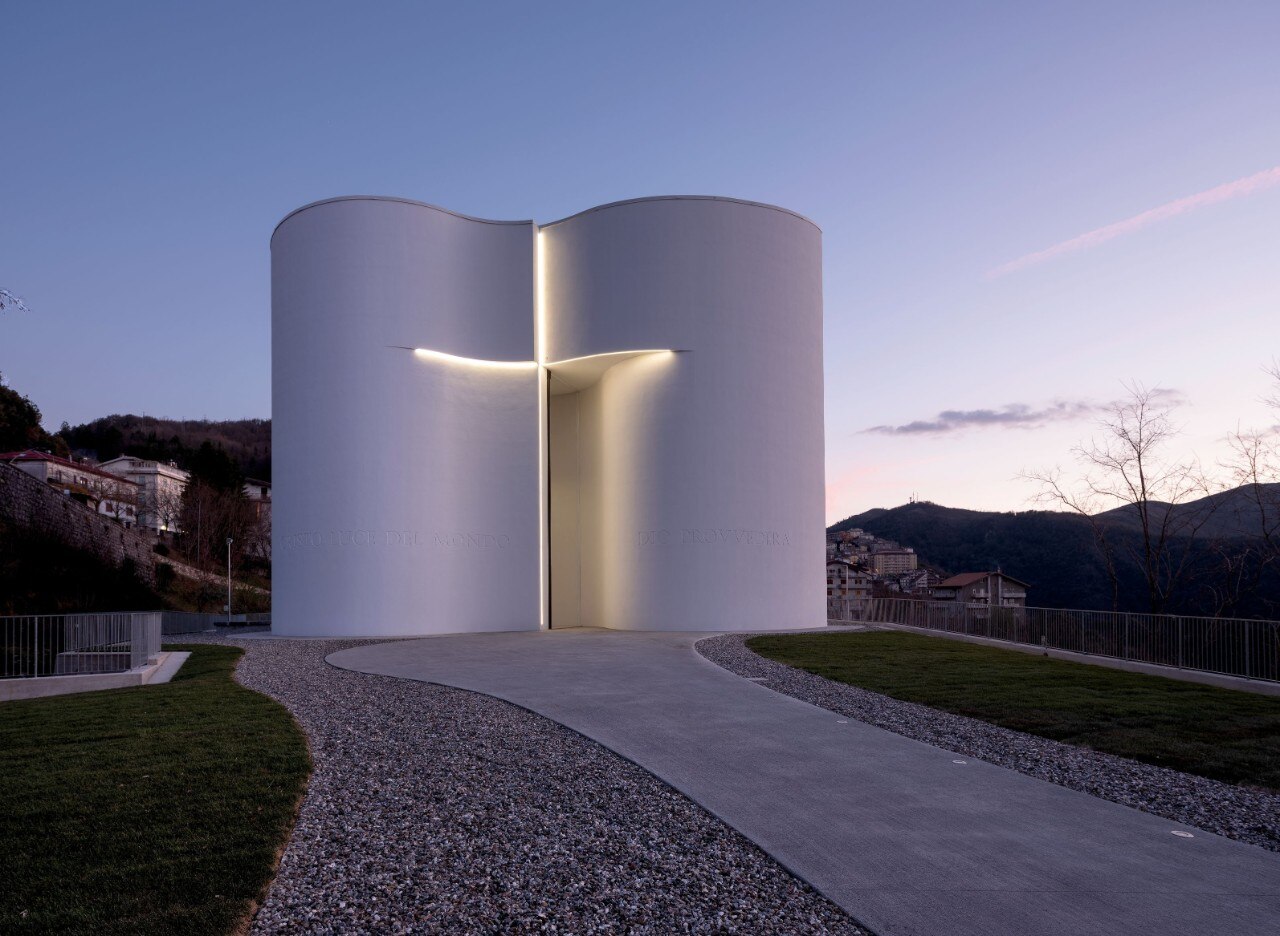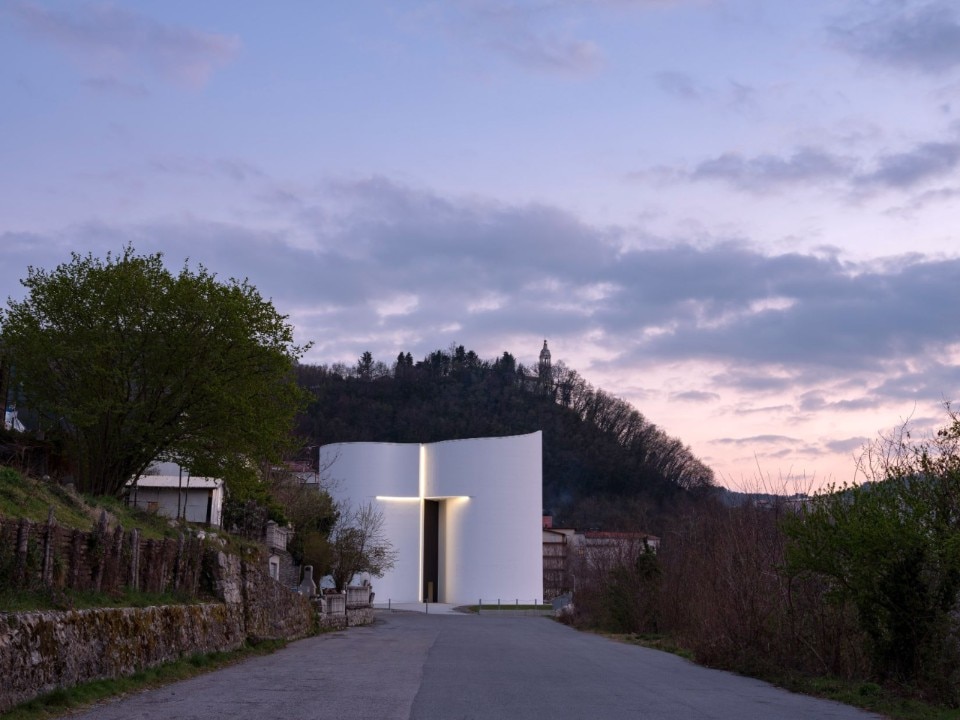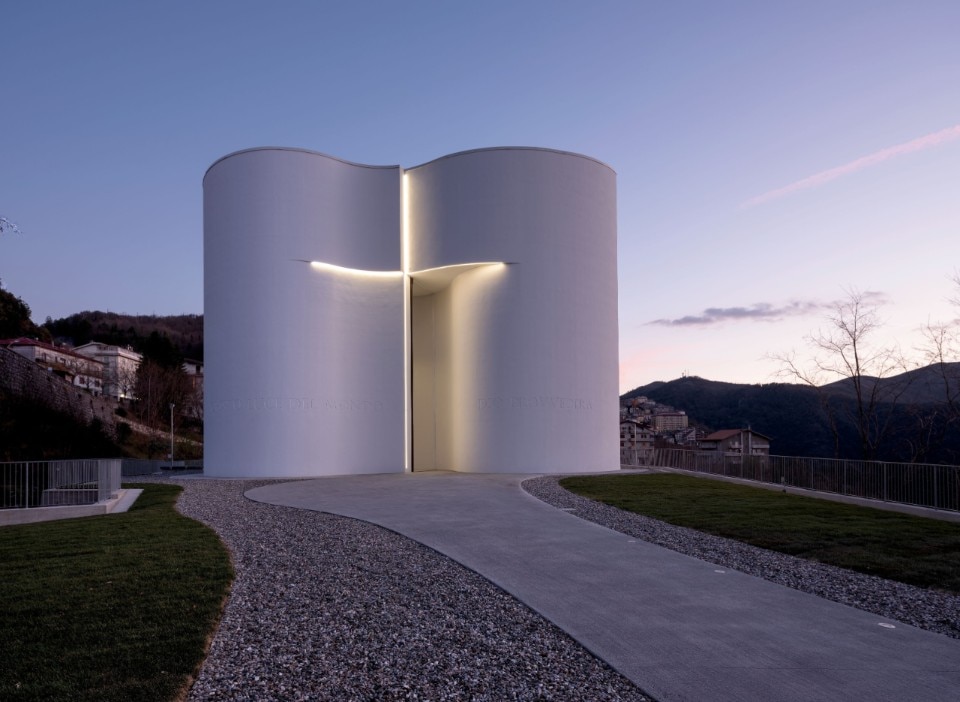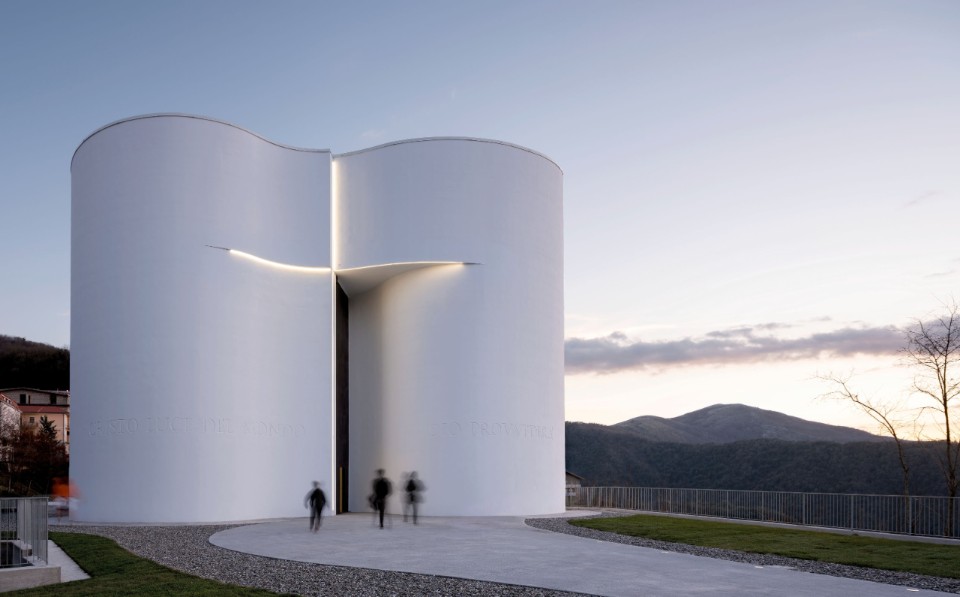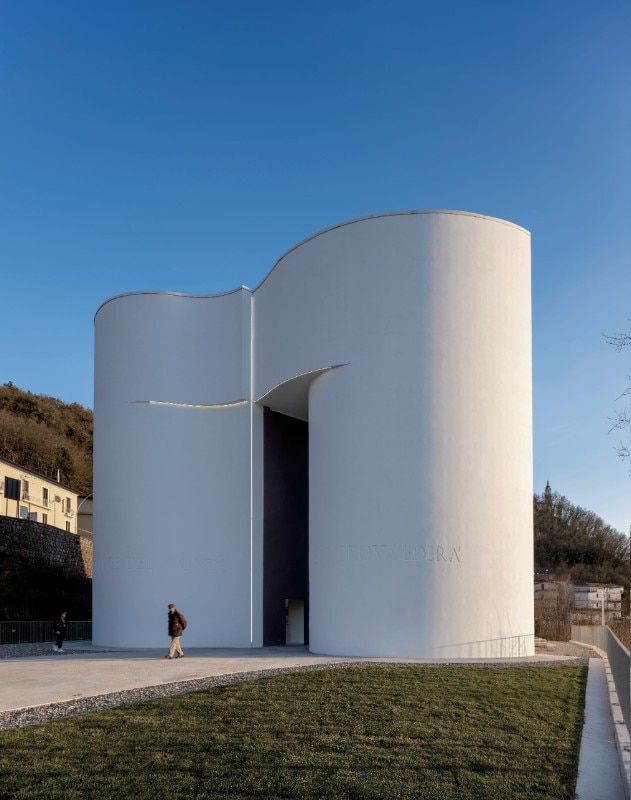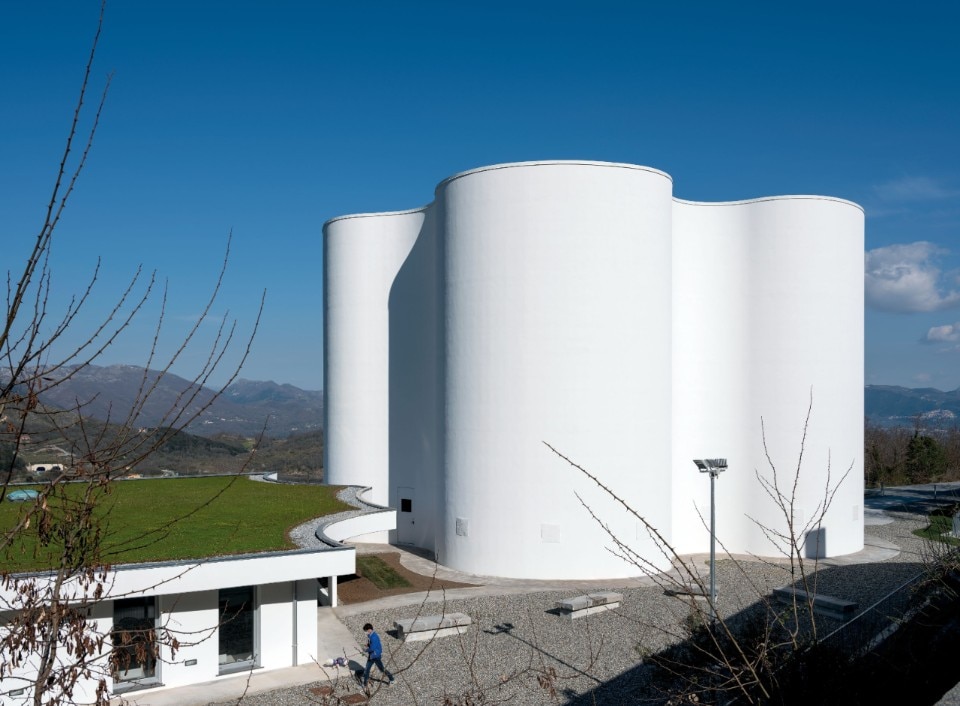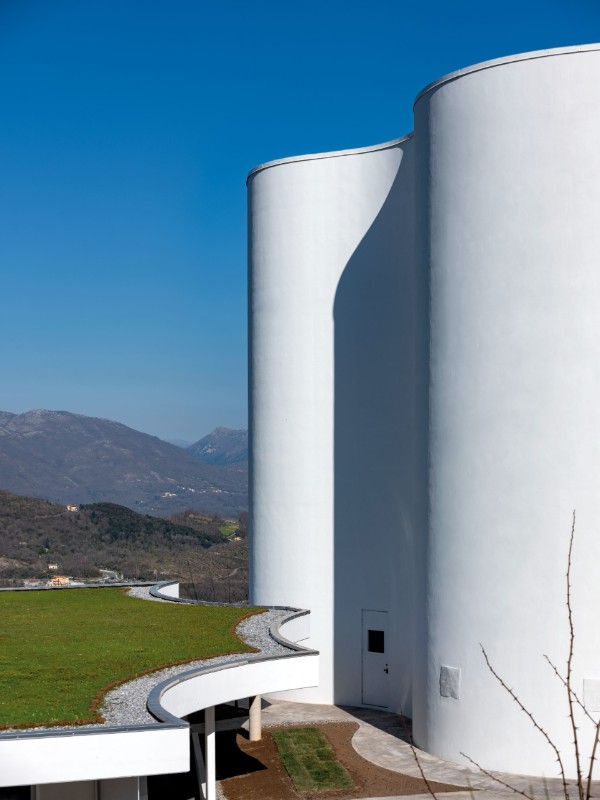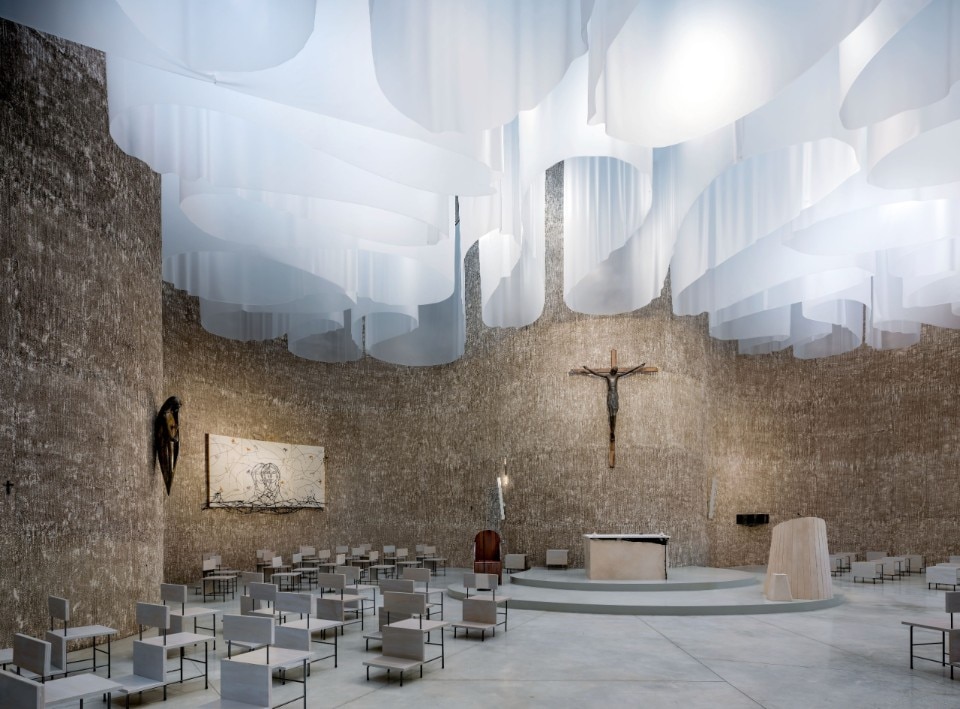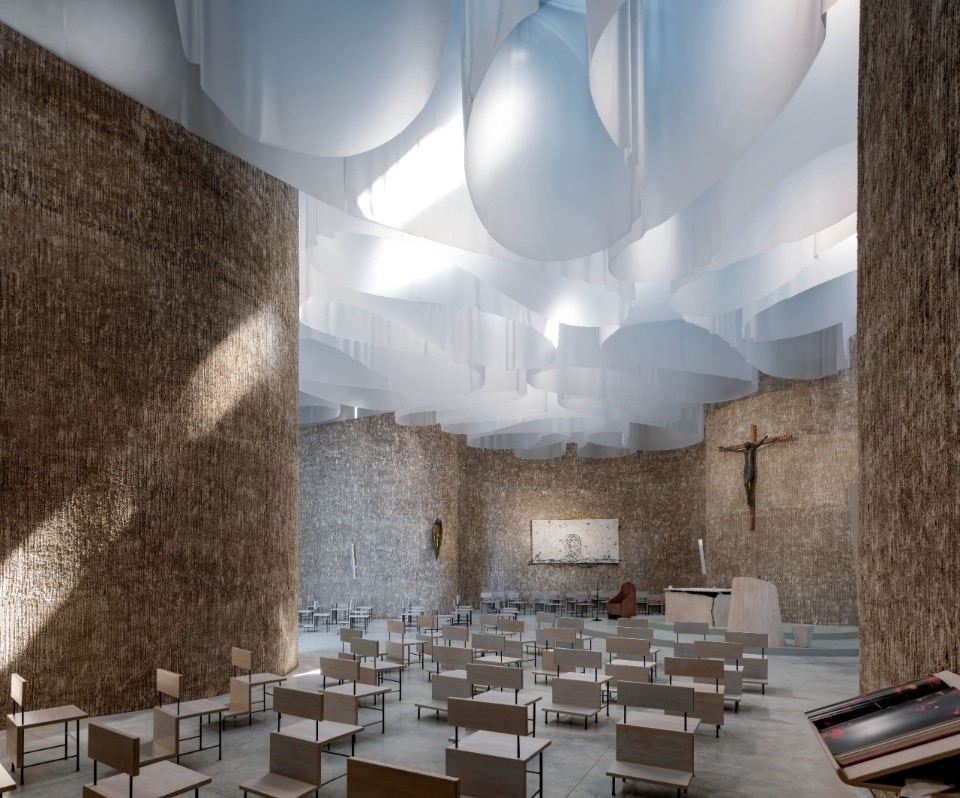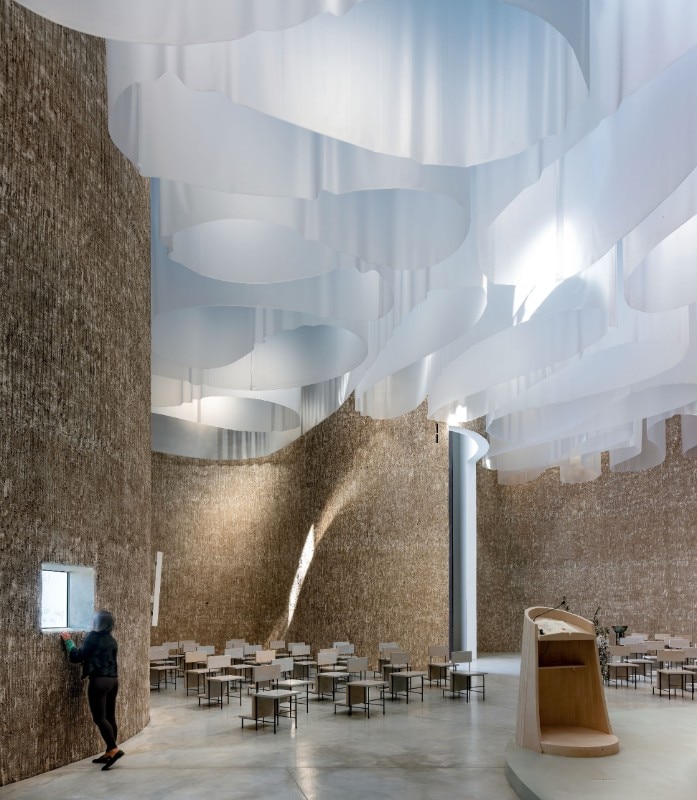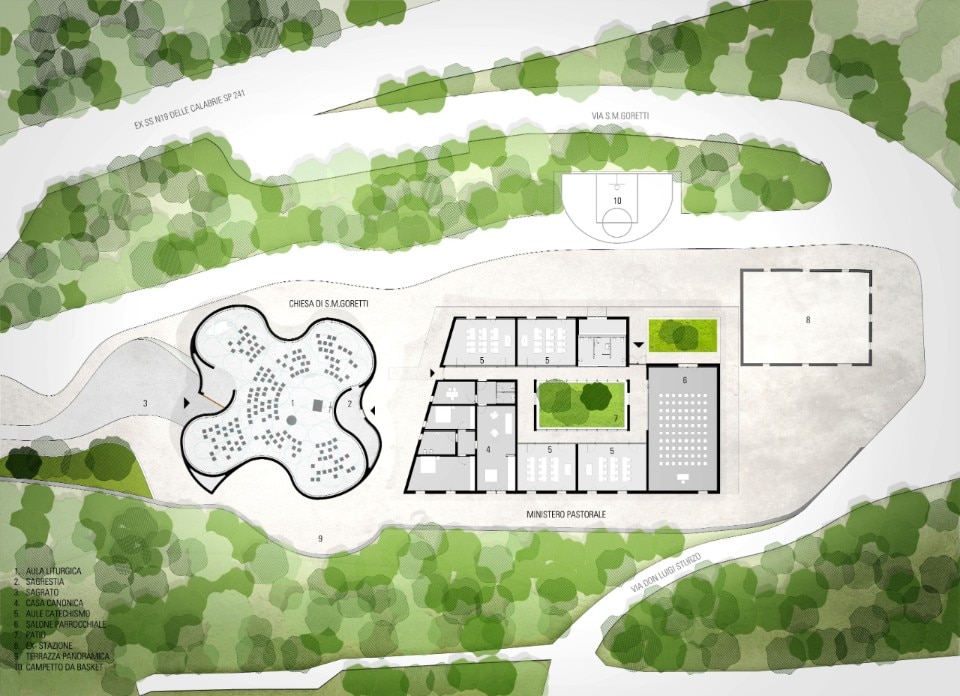This article was originally published on Domus 1061, October 2021.
In Mormanno, in the Parco Nazionale del Pollino, Mario Cucinella Architects has completed the church dedicated to Saint Maria Goretti, the first in the nearly thirtyyear career of this Italian architect. For Cucinella it is an opportunity to intervene in those “interior places” explored in 2018 with Arcipelago Italia, his national pavilion at the 16th Venice Architecture Biennale, introducing qualifying contemporary architecture due to its context.
The church and rectory combine traditional design themes for sacred buildings, above all the intermingling between architecture and art, with Cucinella’s interests, such as establishing a dialogue with the locals. For example, the clay tiles decorating the façade, a via crucis created by local kids based upon the design of the artist Giuseppe Maraniello, who also made the sculptures inside. Cucinella describes his church as organic and baroque. The layout is organic, in a 19th-century sense also in line with Frank Lloyd Wright, because its curves embrace worshippers and blend with the landscape. Instead, the use of the small window is baroque inspired, which the sun crosses to illuminate the crucifix on the saint’s feast day.
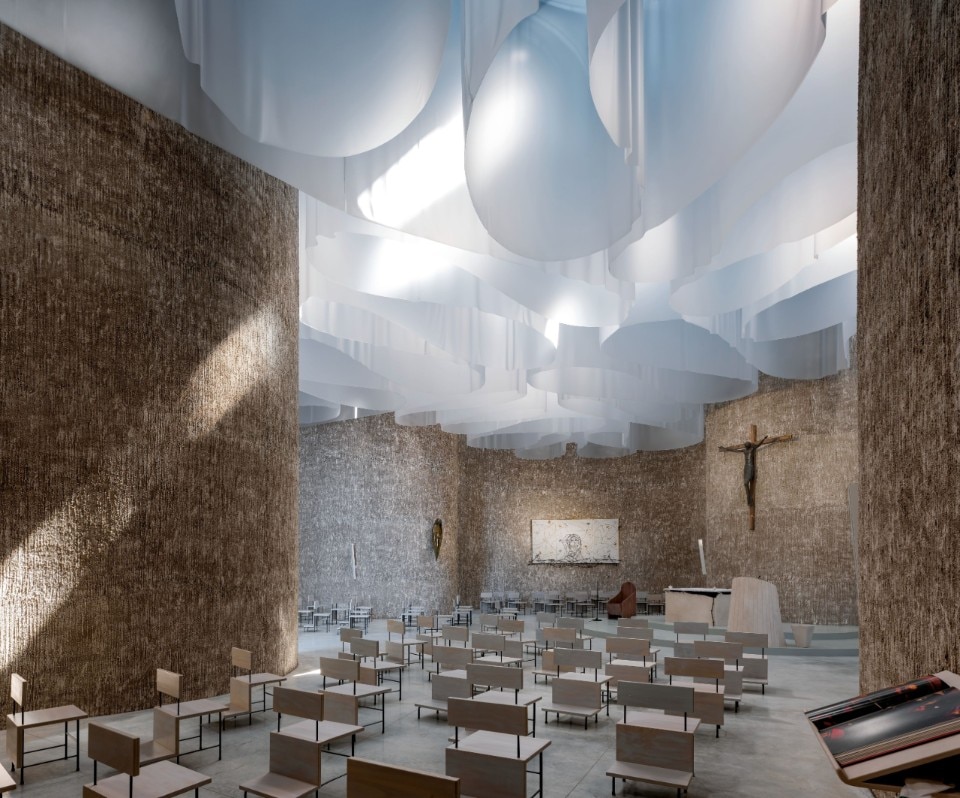
His work deserves attention for its form/language. One may speculate on the affinities with other contemporary religious buildings: the Church of Saint Maria Goretti is pure white and totemic like the Church of Saint Mary in San Marco de Canaveses by Álvaro Siza (1990–1996), while the lit cross that enlivens the walls is reminiscent of the Church of the Light by Tadao Ando in Osaka (1989).
But here we can most appreciate Cucinella’s ability to expand his own vocabulary: the technological component typical of his language, not radically high-tech yet always domesticated and consensual, is toned down by the church’s symbolic presence. The building does not appear like a comprehensible device in its efficiency but rather as a sculpture, both hermetic and evocative. The design’s most impressive solution is the translucent drapery that spreads sunlight, alluding to the mystery of faith much more so than the exactness of science.


